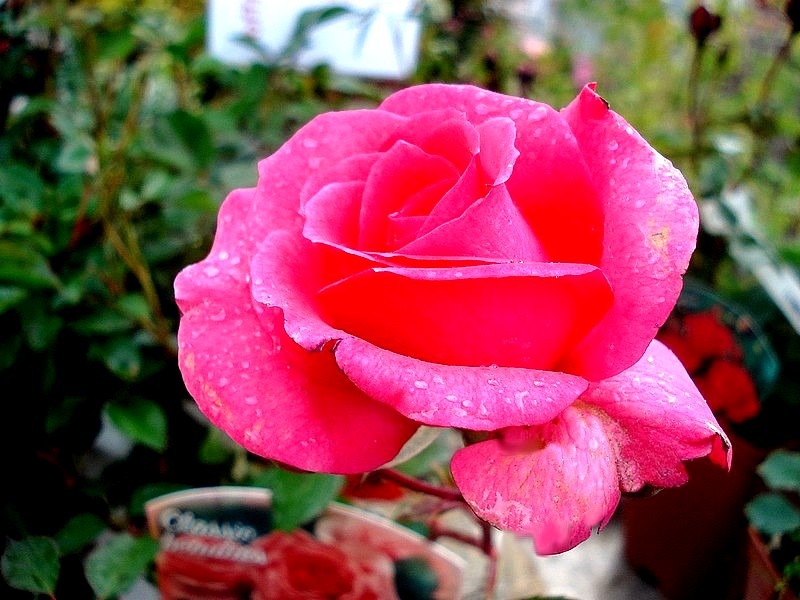|
|
'Tom Tom' rose Description

Photo courtesy of Maurice REYBAUD
Bloom:
Deep pink. Mild, spice fragrance. 23 to 27 petals. Average diameter 3.25". Medium, double (17-25 petals), cluster-flowered, high-centered to flat bloom form. Blooms in flushes throughout the season. Ovoid buds.
Habit:
Bushy, upright. Medium, semi-glossy, dark green foliage. 3 to 5 leaflets.
Growing:
USDA zone 6b and warmer. Spring Pruning: Remove old canes and dead or diseased wood and cut back canes that cross. In warmer climates, cut back the remaining canes by about one-third. In colder areas, you'll probably find you'll have to prune a little more than that.
Patents:
United States - Patent No: PP 1,671 on 24 Dec 1957 VIEW USPTO PATENTApplication No: 655,929 on 29 Apr 1957 Robert V. Lindquist, Hemet, Calif., assignor to Hemet Wholesale, Hemet, Calif., a partnership.
|